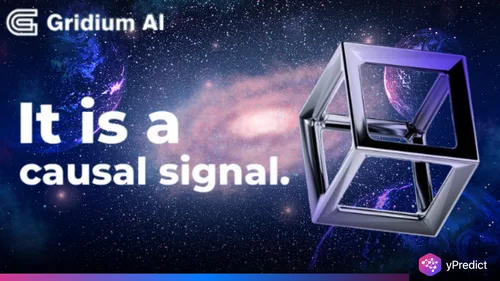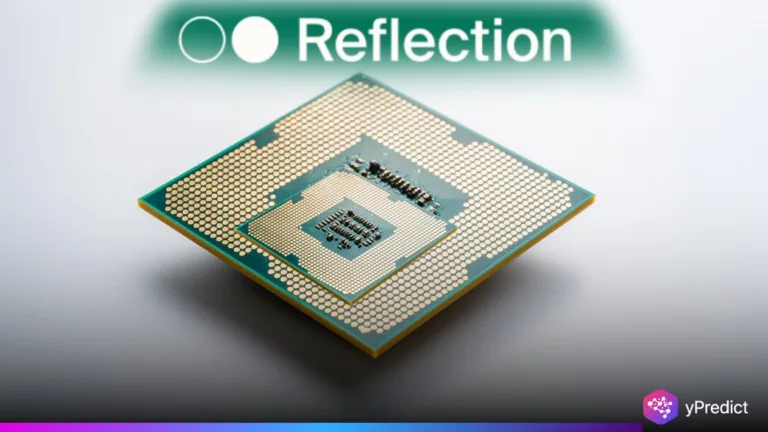
The universe has always had an inherent order that steers its development. Smoot illustrated the significance of cosmic ripples carrying the blueprint of the universe’s early formation, in addition to imprints of some of its earliest moments. Cosmic ripples exist as relics of a past event but also remain as a foundation for a way of understanding the connectedness of all things.
Today, this perspective extends into how we think about intelligence and networks. Gridium draws on these ideas, suggesting that computation is not just mechanical. Instead, each node interaction is a causal signal, part of a larger semantic fabric that binds meaning into the structure of networks. This way of seeing opens a new door into how intelligence itself may be designed and scaled.
The semantic fabric invites us to rethink what it means for information to flow. It transforms abstract computation into a meaningful exchange, much like cosmic ripples transformed into galaxies and structures. With Gridium, this concept becomes not just metaphorical but practical, showing how causality and meaning fuse within every layer of interaction.
Gridium and the Extension of Cosmic Ripples
Smoot’s discovery of cosmic ripples provided humanity with a new perspective on the universe. These ripples showed that the universe carried its blueprint in tiny fluctuations of energy. Gridium extends this understanding into networks. Every node interaction is no longer just a point of computation, but an active contribution to a causal and semantic system.
In this framing, computation becomes more than mechanical steps. Each interaction carries causal signals, embedding direction, influence, and meaning. Much like ripples in space shaped stars and galaxies, interactions in Gridium shape the intelligence and behavior of networks.
The Power of Causal Signals in Intelligent Networks
Traditional computing treats data as isolated operations, processed and stored without meaning beyond the task. Gridium challenges this assumption. It argues that causal signals connect every computation to a broader flow of meaning. This transforms the system from a passive processor into an intelligent network capable of interpretation and adaptation.
The presence of causal signals makes the network dynamic. Each node influences not only its neighbors but also the emergent structure of the system. Meaning, therefore, does not reside in single computations. It emerges from the network’s ability to carry context, history, and direction through its semantic fabric.
Building a Semantic Fabric That Scales Meaning
The phrase semantic fabric refers to the impression that intelligence relies on connections with meaning, not just computation. In the same way that a piece of woven fabric can be composed of several threads, signals and interactions collectively produce patterns that carry meaning. Gridium imagines networks to be woven fabrics and suggests computation and causality become unified into a holistic unit.
When we look at networks as a semantic fabric we can gain new tools to understand distributed intelligence. Each node has its own purpose, but the entire distributed system takes on meaning, that’s when the intelligence becomes greater than the sum of the parts. This is not unlike the origin of the universe, when small ripples (cosmic inflation) seeded the structures that gave rise to galaxies, a planetary structure, and life as we know it.
Rethinking Intelligence Through Gridium
For a long time now, people have described intelligence as computation at scale. Gridium invites us to rethink that. Gridium claims that intelligence isn’t simply computation; it is the process of incorporating meaning into every engagement. The semantic fabric is the linchpin of this rethinking, providing a framework for understanding how intelligence happens through causal networks that are not independent.
Once we subscribe to this perspective, we unlock opportunities for learning systems that interpret information in depth. Networks become not passive tools, but active fabrics of meaning, vibrating with the same principles that shaped the universe through cosmic ripples.
Final Thoughts
Gridium offers a vision that connects the patterns of the universe with the evolution of networks. By reframing computation as part of a semantic fabric, it shows how meaning emerges through causal signals. Just as cosmic ripples seeded the blueprint of the universe, Gridium envisions intelligent networks as woven systems where every node interaction shapes collective meaning.
This perspective pushes us to rethink intelligence itself. It is not just about speed or scale of computation, but about the ability to carry and create meaning. The semantic fabric represents this new frontier, offering a blueprint for designing networks that resonate with the deepest patterns of existence.






